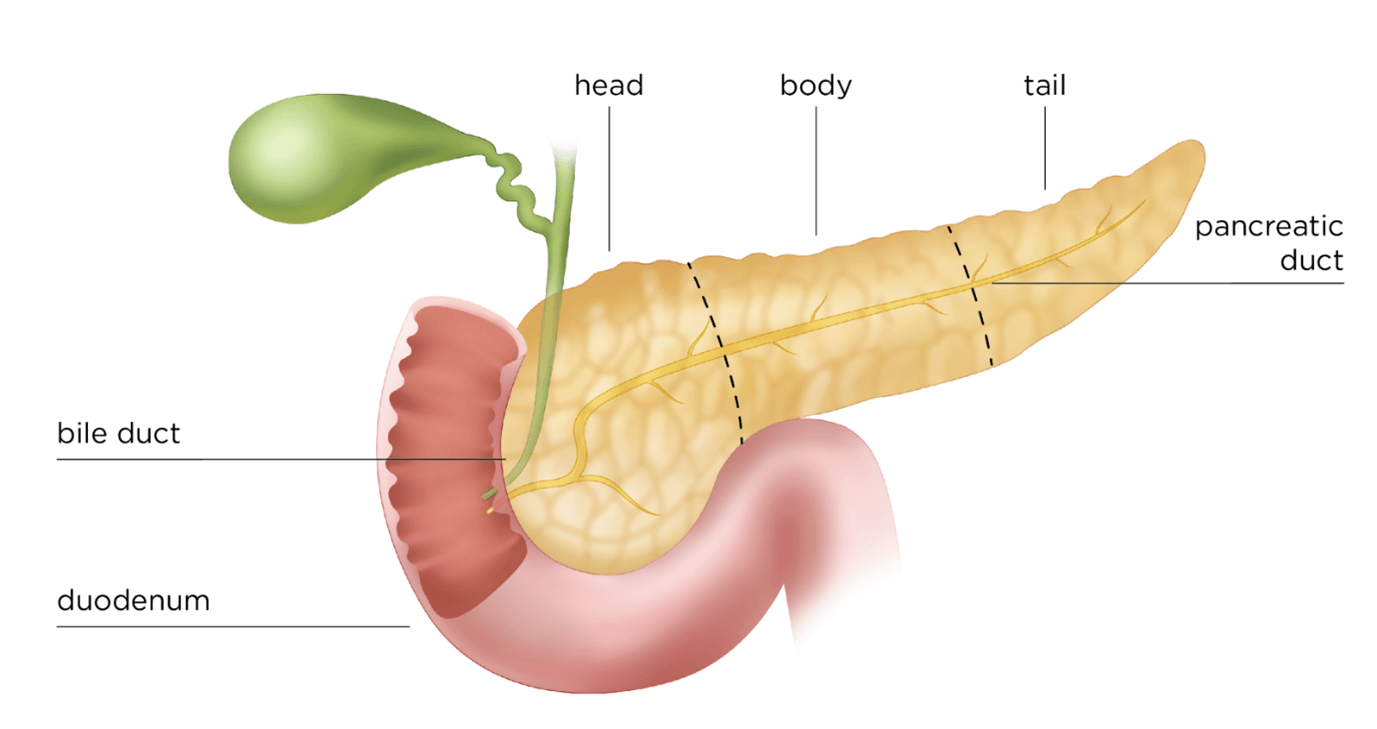Subscribe to our email newsletter
Be kept in the loop about our latest news on pancreatic cancer, the charity and our supporters.
The pancreas is an essential organ that both men and women have. It is responsible for producing enzymes that help break down your food and hormones which control your blood sugar levels.

It is about 6 inches long and shaped like a thin pear lying on its side. The wider end of the pancreas is called the head, the middle section is called the body, and the narrow end is called the tail. The pancreas is found deep inside your body, behind the stomach and in front of the spine.

A tube called the pancreatic duct connects the pancreas to the first part of the small intestine, known as the duodenum. Digestive enzymes pass through this tube to help break down food.
Another tube, called the common bile duct, passes through the head of the pancreas. This tube carries bile – a substance that helps to digest fats – from the liver and gall bladder to the small intestine. The bile duct may get blocked when a pancreatic tumour invades it. This causes jaundice (yellowing of the eyes and skin and dark urine).

 The information provided in this site, or through links to other websites, is not a substitute for medical or professional care and should not be relied upon as such. Read our disclaimer.
The information provided in this site, or through links to other websites, is not a substitute for medical or professional care and should not be relied upon as such. Read our disclaimer.
Sources and references for this information product will be supplied on request. Please contact us quoting the Information Product number below:
| Information Product № | PCA0011v3 | Published | 07/09/2022 |
|---|---|---|---|
| Last Updated | 19/03/2024 | Next Review Due | 02/09/2022 |